
Share
Published on 12 October 2021
Billionaire Richard Branson and three other passengers launched suborbital tourism on Sunday 11 July aboard the craft SpaceShipTwo VSS Unity of Virgin Galactic, which reached an altitude of 86 km.
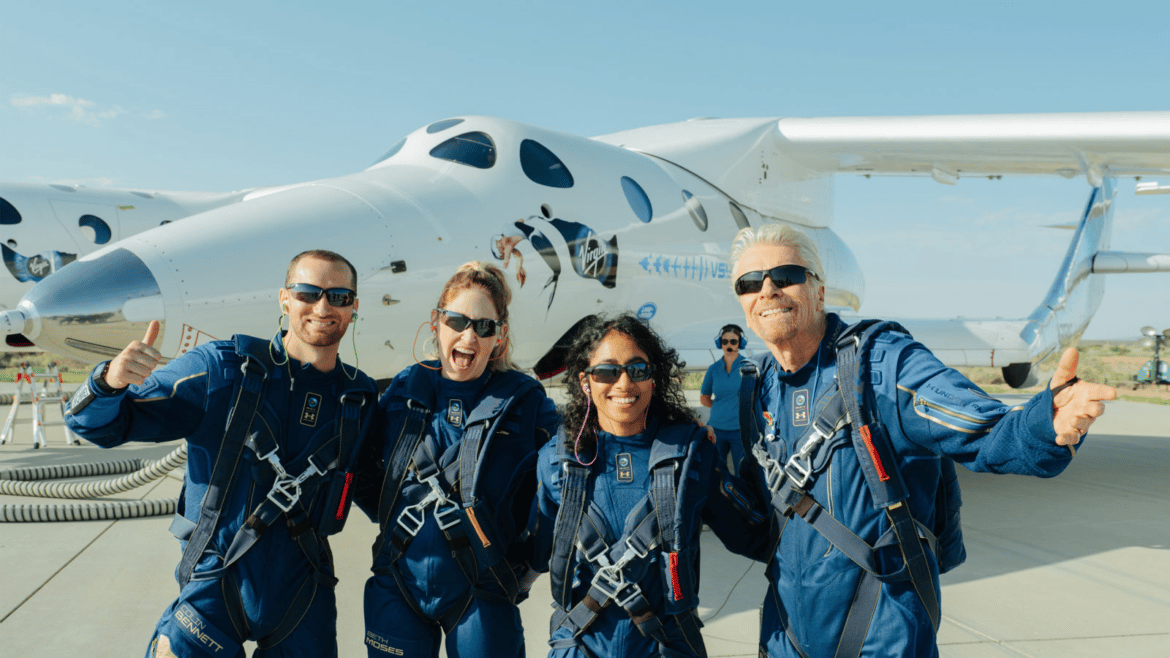
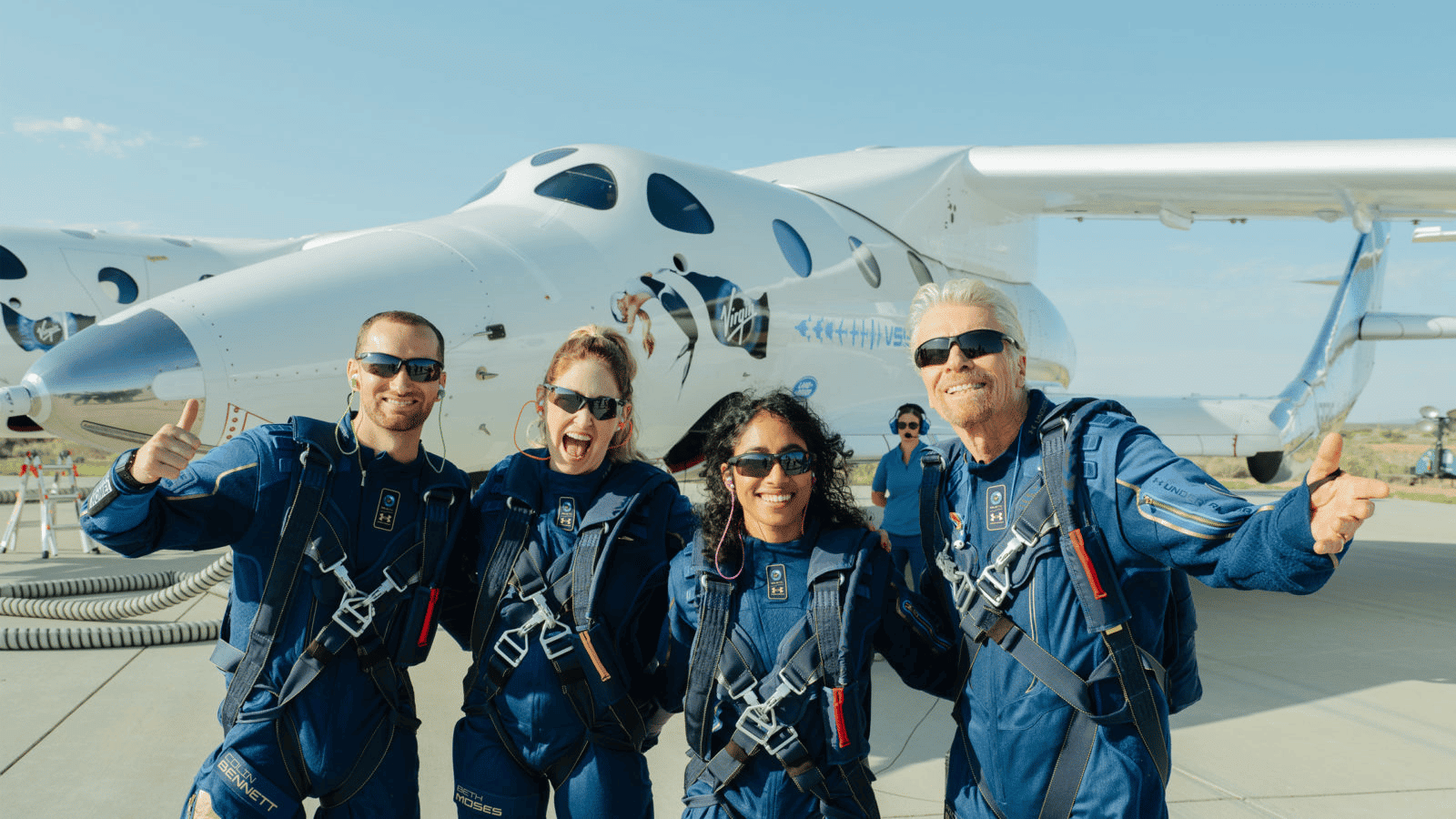
The first four space tourists after their suborbital flight on 11 July 2021 aboard the Space ShipTwo rocket-plane. From left to right: engineer Colin Bennett, instructor Beth Moses, company vice-president Sirisha Bandla, Richard Branson founder of Virgin Galactic Credit: Virgin Galactic
“It’s exceptional, a unique experience in life,” exclaimed, the enthusiastic boss of Virgin Galactic, while the rocket-plane was gliding to a perfect landing at Spaceport America, the centre where it had taken off an hour beforehand, in the New Mexico desert.
SpaceShipTwo, placed under a carrier aircraft made from two airframes, White Knight 2 called VMS EVE, took off at 08.40 local time (16.40 Paris time), an hour and a half later than scheduled, spiralling up into a cloudless sky.
Released at an altitude of 15,000 m, guided by two pilots, the rocket-plane then started its engine, rising vertically at three times the speed of sound (mach 3, i.e. 3700 km/h), to its maximum flight altitude.

VMS WhiteKnight the carrier aircraft of SpaceShipTwo, which transported the passengers including Richard Branson for the first suborbital tourist flight Credit: Virgin Galactic
Seated in elegant seats in the cabin with 12 portholes on the sides and ceiling, the four passengers observed the curvature of the Earth and a dark sky, even in the middle of the day. Then they floated in the cabin, experiencing weightlessness for three minutes. The rocket-propelled aircraft then landed after a flight of almost an hour in total, which brought space into the era of suborbital space tourism.
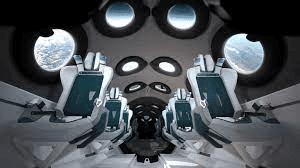
Interior of the rocket-propelled aircraft SpaceShipTwo which carried the first four space tourists, including Richard Branson Credit: Virgin Galactic
Images of the flight, broadcast live by many television channels, showed in turns the trail left in the sky by WhiteKnight‘s engines, Richard Branson, 70 years old, smiling a few minutes before SpaceShipTwo‘s release, the passengers floating in the cabin, then back in their seats, congratulating each other. “Congratulations to the crew, to all the engineers!” declared Richard Branson.
In succeeding with this first suborbital tourism experience, Richard Branson beat Jeff Bezos, another billionaire, to it. The founder of Amazon had in fact planned to go into suborbital space with passengers aboard the New Shepard rocket of his Blue Origin company on 20 July, the date of the 52nd anniversary of Neil Armstrong‘s landing on the Moon during the Apollo 11 mission in 1969.
Richard Branson, for this first tourist flight, was accompanied by prominent members of his team: the pilots Dave Mackay and Michael Masucci, engineer Colin Bennett, Beth Moses, Virgin Galactic’s astronaut instructor, and Vice-President of the company, Sirisha Bandla.
In announcing his plan to take part in this flight, he explained in a tweet: “I have always been a dreamer. My mother taught never to give up and to reach for the stars. On 11 July, it is time to make this dream come true.” Just back from space, he exclaimed: “It was quite simply magical.”
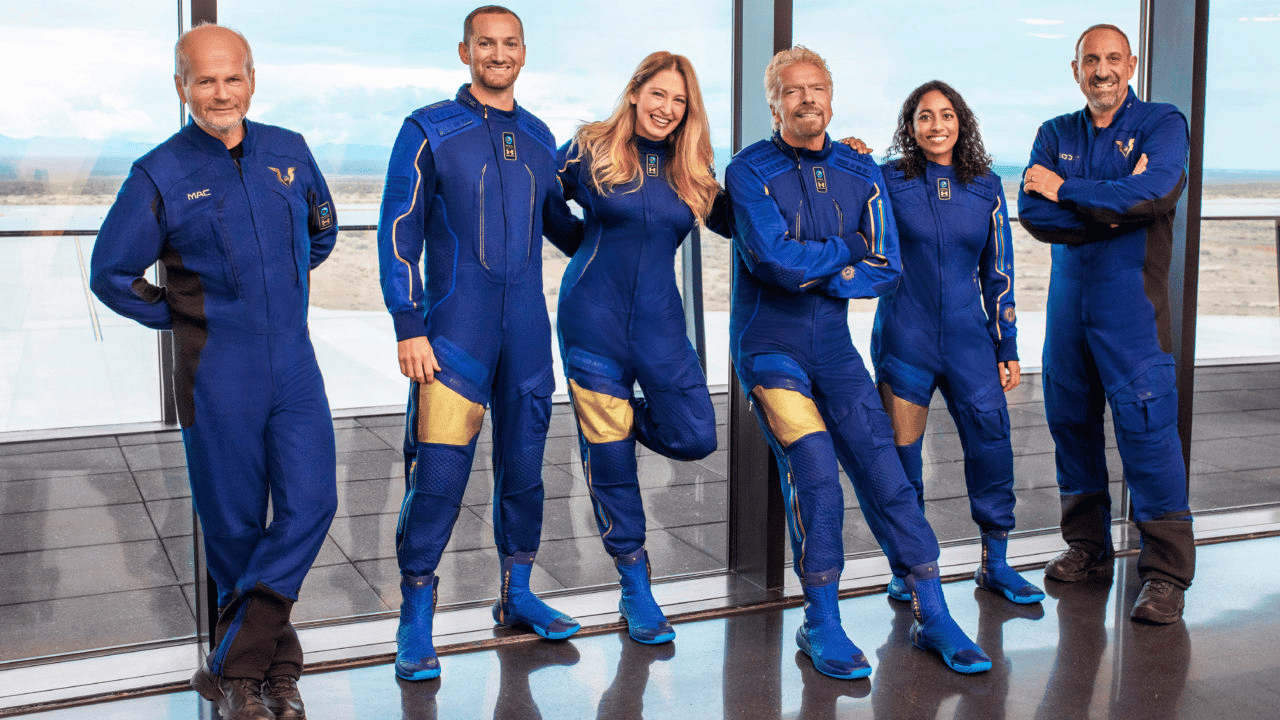
Pilot Dave Mackay, engineer Colin Bennett, instructor Beth Moses, founder of Virgin Galactic Richard Branson, company Vice-President Sirisha Bandla and pilot Michael Masucci. Credit: Virgin Galactic
This was the 22nd flight of a SpaceShipTwo, and its fourth mission with crew beyond 80 km of altitude.
The first flight with a crew took place in 2010, and a tragic accident in 2014 cost the life of one of the two pilots. Virgin Galactic, which already had more than 600 reservations for its flights at around 250,000 dollars, plans to organise regular flights from 2022. On 25 June, the company received permission from the American Federal Administration of Aviation (FAA) to transport passengers.
These are tourists transported by a private company – Virgin Galactic – while seven space tourists have already been to the International Space Station (ISS) – the first was Dennis Tito in 2001 – aboard a Soyuz capsule of the Russian space agency, Roscosmos.
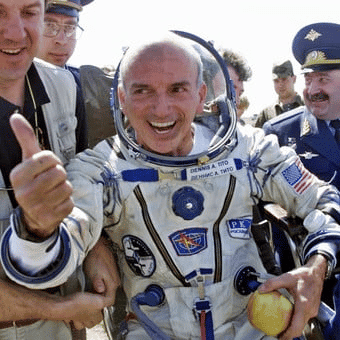
The first space tourist, Dennis Tito, on his return from a stay on the International Space Station in 2001 Credit: NASA
The exploit of sending tourists into space on SpaceShipTwo, however, is not without controversy.
The first concerns the altitude reached by the rocket-propelled aircraft, 86 km. Richard Branson believes that his passengers reached space, based on a definition of the limit of space being 80 km, recognised by the American space agency, NASA, and the American Air Force, while the International Aviation Federation places the limit at 100 km to reach space, known as the Karman line.
The recoverable launcher New Shepard of Jeff Bezos, for its part, will take its passengers beyond 100 km.
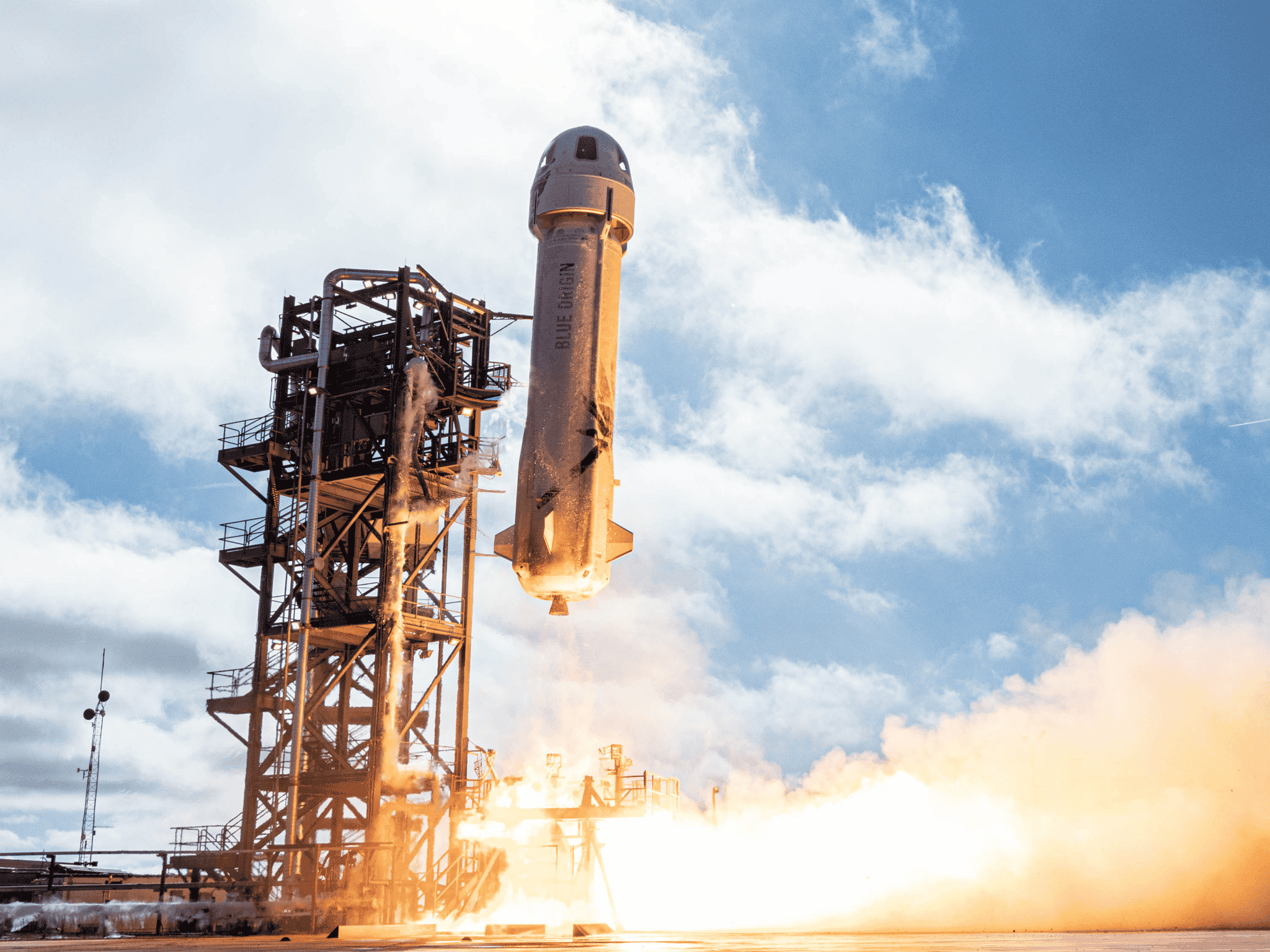
Launch of the New Shepard rocket on 11 December 2019.
Credit : Blue Origin
Furthermore, environmentalists are beginning to ask questions about the disastrous consequences, according to them, of these tourist flights: the construction of space centres, pollution due to the launch of rockets … and all that for the pleasure of a few millionaires.
Now, for the first French spaceman, Jean-Loup Chrétien, you have to put things into perspective. While welcoming the success of Richard Branson‘s flight, he stressed: “It is very good, but not comparable” with the missions of professional astronauts such as Thomas Pesquet, currently aboard the ISS.